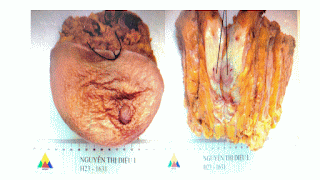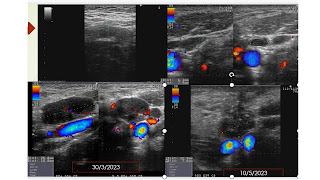A 58 year-old male patient in general check-up is revealed incidentaĺly by ultrasound an aneurysm of left iliac vein # 48x66 mm without thrombosis. In addition, the left external iliac artery dilates #15-21mm appears in tortuosity like a corkscrew.
MSCT 64 confirmes the findings of the aneurysm of left iliac vein # 48x66 mm without thrombosis.
And in 3 D reconstruction the corkscrew of left external iliac artery appears clearly in mild dilatation without damage of its wall beside the aneurysm of the left iliac vein.
The corkscrew of external iliac artery is an anatomic variant incidentally revealed by CTA but a skilled sonologist could detects it with experience oneself. However, the key of this case is the aneurysm of iliac vein which leads to find out an uncomplicated aneurysm and the arterial tortuosity of the external iliac artery close by. But the cause of the left iliac vein aneurysm is unknown.
Aneurysm of iliac vein is a rare entity which appears in men and on the left side. And in contrast, female gender is a predisposing factor of the arterial tortuosity.
The patient is planned to the conservative management.
REFERENCES
:































.jpg)
.jpg)
.jpg)
.jpg)











.jpg)
.jpg)
.jpg)
.jpg)
.jpg)